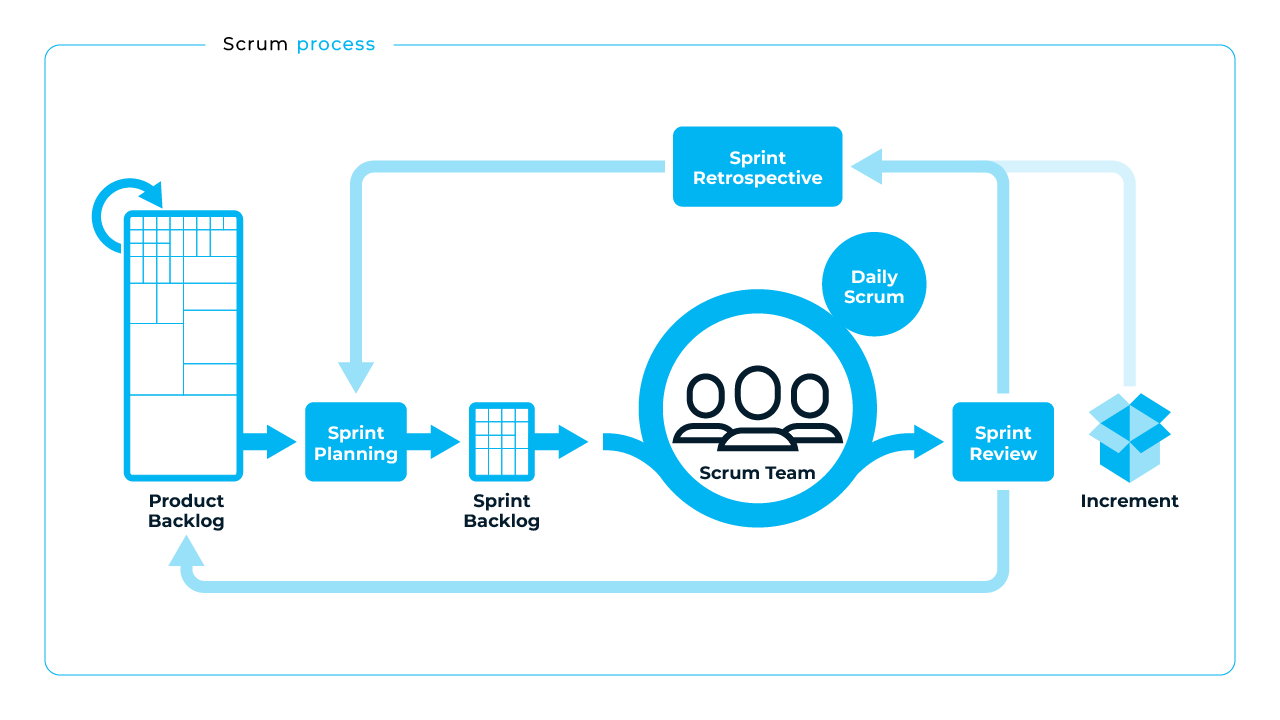What is Scrum? Everything You Need to Know About the Agile Framework
If you're in product development, there's a good chance you've heard of the agile framework Scrum. But what is it, and why should you care? In this blog post, we'll define Scrum and outline its key benefits for product delivery.

Overview
If you're in product development, there's a good chance you've heard of the agile framework Scrum. But what is it, and why should you care? In this blog post, we'll define Scrum and outline its key benefits for product delivery. We'll also discuss some of the challenges associated with using Scrum, and how to overcome them. By the end of this post, you'll have a clear understanding of what Scrum is and how it can help your business deliver products more efficiently and effectively.
What is Scrum and how to implement it?
The agile framework Scrum is a popular product delivery methodology that can help businesses more efficiently and effectively deliver products. To implement Scrum, you'll need to establish a team of Scrum Masters, who will be responsible for guiding and coaching the rest of the team in using the Scrum methodology. You'll also need to create a product backlog, which is a list of all the features and functionality that you want to include in your product. The product backlog will be constantly updated as the team works on delivering new features and functionality. Finally, you'll need to establish a sprint backlog, which is a list of tasks that need to be completed in order to deliver a new feature or functionality. The sprint backlog will be updated daily as the team works on completing its tasks.
Scrum Team
The scrum team is a team of people who are responsible for guiding and coaching the rest of the team in using the Scrum methodology. The scrum team typically includes a scrum master, product owner, and developers.
Core Artifacts
In scrum, the core artifacts are the product backlog, sprint backlog, and burndown chart. The product backlog is a list of all the features and functionality that you want to include in your product. The sprint backlog is a list of tasks that need to be completed in order to deliver a new feature or functionality. The burndown chart is used to track the progress of the team as it works on completing its tasks.
Product Backlog
The product backlog is a list of all the features and functionality that you want to include in your product. The product backlog will be constantly updated as the team works on delivering new features and functionality.
Sprint Backlog
The sprint backlog is a list of tasks that need to be completed in order to deliver a new feature or functionality. The sprint backlog will be updated daily as the team works on completing its tasks.
Increment
The product increment is the added value that the team delivers at the end of each sprint. The product increment is typically a new feature or functionality that the team has been working on during the sprint.
Scrum Ceremonies
The core scrum ceremonies are the product backlog grooming session, sprint planning, daily scrum, sprint review, and sprint retrospective.
Sprint Planning
The sprint planning meeting is a key part of the Scrum methodology. During the sprint planning meeting, the team will outline the tasks that need to be completed in order to deliver a new feature or functionality. The team will then estimate how many hours it will take to complete each task. This information will be used to create a sprint backlog, which is a list of tasks that need to be completed in order to deliver a new feature or functionality. The sprint backlog will be updated daily as the team works on completing its tasks.
Daily Scrum
The daily scrum is a meeting that takes place at the beginning of every day. During the daily scrum, the team will update each other on the tasks that they are working on. The team will also identify any tasks that are blocking them from completing their work.
Backlog Grooming
Backlog grooming is the process of updating and organizing the product backlog. During backlog grooming, the team will review and update the product backlog with new features and functionality that need to be included in the product. The team will also organize the product backlog into priority order, so that the most important features and functionality are at the top of the list.
Sprint Review
The sprint review is a meeting that takes place at the end of every sprint. During the sprint review, the team will demonstrate the features and functionality that they have delivered during the sprint. The team will also discuss how well they met their goals for the sprint.
Sprint Retrospective
The sprint retrospective is a meeting that takes place at the end of every sprint. During the sprint retrospective, the team will discuss what went well during the sprint and what didn't go well. The team will then brainstorm ways to address any issues that arose during the sprint.
Roles in Scrum
The scrum team typically includes a scrum master, product owner, and developers. The scrum master is responsible for ensuring that the team follows the scrum methodology. The product owner is responsible for ensuring that the team delivers a valuable product increment. The developers are responsible for completing the tasks that are outlined in the sprint backlog.
Scrum Master
The scrum master is responsible for ensuring that the team follows the scrum methodology. They are also responsible for resolving any issues that may arise during the course of the sprint.
Product Owner
The product owner is responsible for ensuring that the team delivers a valuable product increment. They are also responsible for ensuring that the team has the resources they need to complete their work. The product owner is typically a member of the scrum team.
Development Team
The development team is responsible for completing the tasks that are outlined in the sprint backlog. The development team typically includes developers and a scrum master.x
What are the benefits of scrum?
The benefits of scrum include:
- Increased productivity
- Reduced stress
- Improved communication
- Faster delivery of features and functionality

